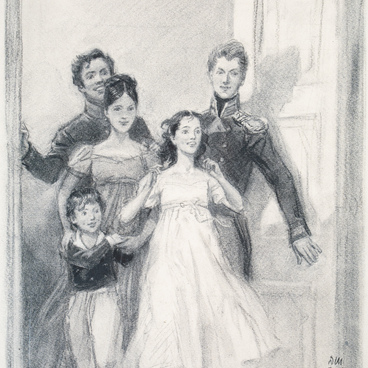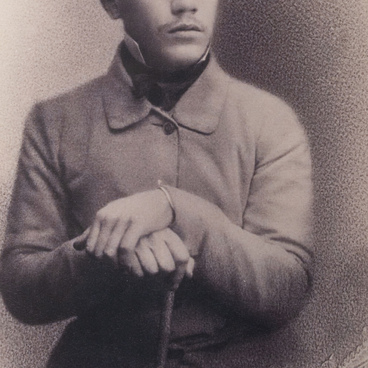The surname “Tolstoy” is one of ancient Russian gentry. According to the family legend, it comes from a native “of the Germans, from the Tsesarky land”.
Presumably, the Tolstoys came from a Lithuanian man named Indris (Christian name, Leontius). In 1353, together with his two sons, Konstantin and Feodor, as well as a squad of 3000 people, he went to serve in Chernigov, Russia. His great-grandson, Andrey Kharitonovich, joined the service of the Grand Prince of Moscow, Vasily the Blind, who gave him the nickname Tolsty (Fat), which later became a surname.
The most famous representatives of the House of Tolstoy are descendants of Pyotr Andreyevich Tolstoy — a prominent government figure of the Peter the Great era and diplomat. On May 7, 1724, at the coronation of Catherine I, he became a count of the Russian Empire and received the right to have a family coat of arms. Two years before that, Peter I had established the post of the Imperial King of Arms, whose duty was to control the coats of arms of the Russian nobility, oversee their creation, validate their authenticity and right of possession.
The coat of arms reflected the status, nature and occupation of the owner, so every detail and color mattered. Gold symbolized power and wealth, silver — nobility, and blue — justice. The coat of arms of the Tolstoy family is a shield divided into six parts. In its center is a small blue shield decorated with a golden saber and a silver arrow threaded crosswise through the bow of a golden key. This symbolized the determination to fight for the Motherland.
The cross of St. Andrew the First-Called symbolizes the order of Pyotr Tolstoy, and the marshal’s staff represents his rank at the royal court. The golden crown on the chessboard refers to Tolstoy’s role in the return of Tsarevich Alexei from Naples, and the seven towers of the Turkish fortress — to his service as the ambassador to Turkey.
The shield is topped with the count’s crown with three helmets. On the right is a tower with a crescent moon on top and a hand with a quill. The shield is held by two greyhounds looking to the sides, they signify “speedy and sure success in occupation”, as well as the loyalty of the count’s family to the sovereign. After the death of Peter I, Count Tolstoy was imprisoned in the Solovetsky Monastery, where he soon died. The noble title was returned to the Tolstoys only 30 years later.

